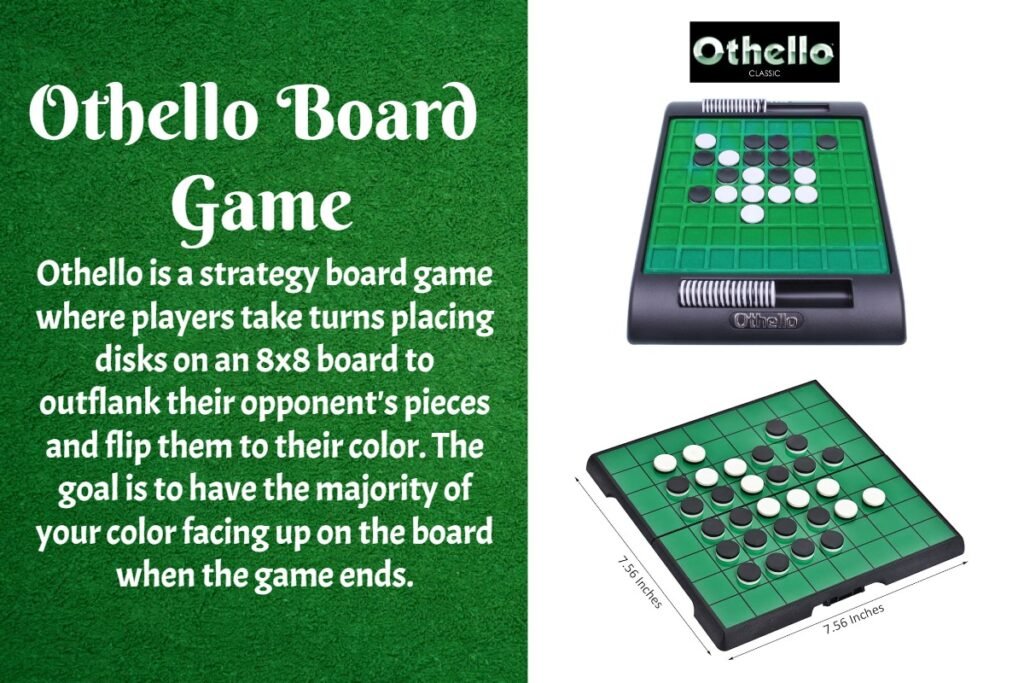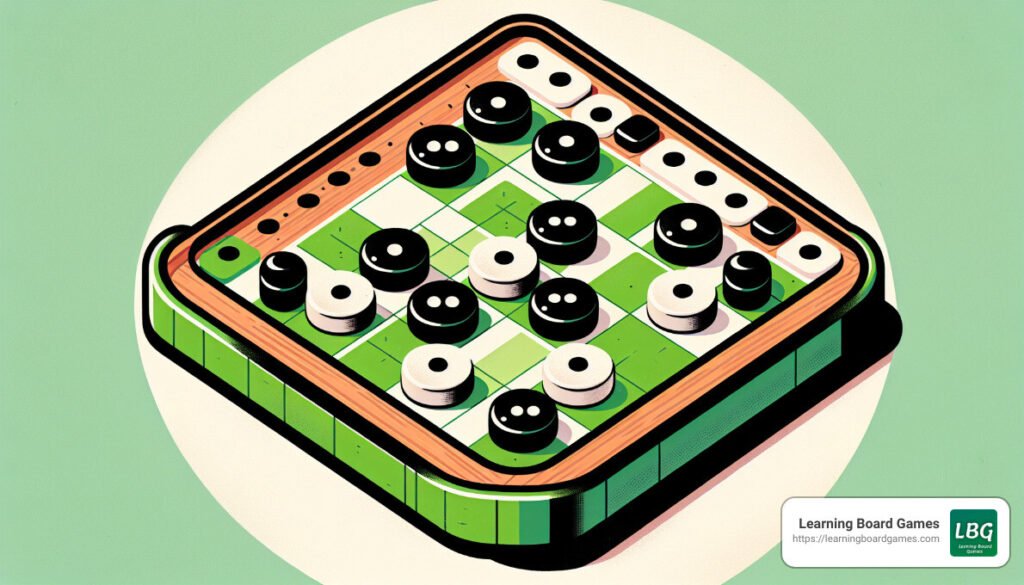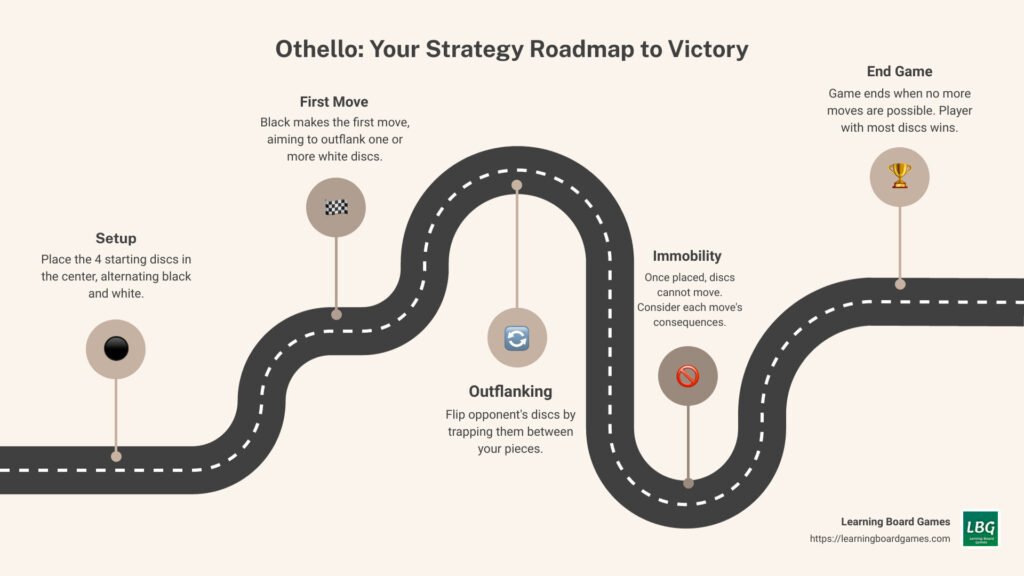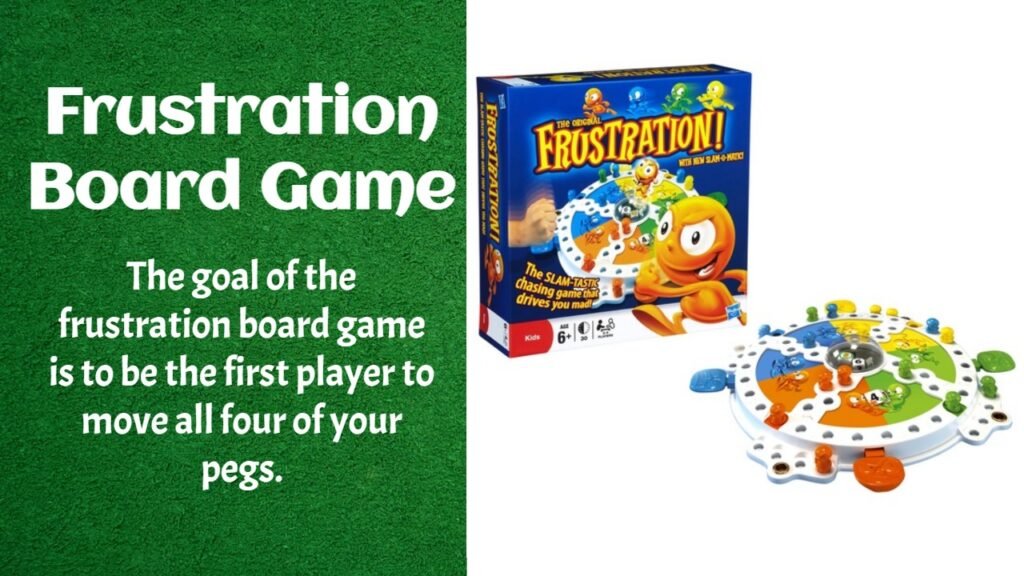Othello, also known as Reversi, is one of the best strategy board games for two players. The goal to play the Othello game is to have the majority of disks reversed to display your color at the end of the game. To play Othello, on each players turn they must place one disc on any empty space on the board. And outflank their opponent to outflank means to have your discs on either side of a continuous. And the new disc they are adding to the board will then get to flip, over every one of your opponent’s discs that’s in a continuous, and may be in the straight line in horizontally, vertically, or diagonally direction.

The Othello Board and Pieces
The game is played on an 8×8 grid board and utilizes 64 double-sided discs. These discs are black on one side and white on the other, representing the two players. The board is set up in such a way that it is easy to keep track of moves and possible strategies. If you don’t have the official Othello board, a chess or checkerboard can also work well.
Each player starts with 30 discs, which are flipped to show the color they have chosen – black or white. As the game progresses, the discs will be flipped over to the opponent’s color, depending on the moves made. This flipping of discs is a crucial aspect of the game, as it is how players gain control of the board.
How to Play Othello Board Game
The objective of the game is straightforward – have the most discs of your color on the board when the game ends. This is achieved by strategically placing your discs to ‘outflank’ your opponent’s discs, causing them to be flipped to your color. The game requires a delicate balance of offensive and defensive play, making every move critical.

How do you play the board game othello?
Here are the rules for playing the board game Othello, also known as Reversi:
- Set up the game by placing four discs in the center squares of the board, two black and two white, with the matching colors diagonally opposite each other.
- Choose sides by flipping a coin to decide who plays as black, and then split the remaining discs equally between the players.
- Take turns and black always moves first, and players take turns placing one disc of their color face up on the board.
- To outflank an opponent, place a disc so that your opponent’s discs are bordered by yours on each end, either horizontally, vertically, or diagonally.
- Flip over all of your opponent’s discs that are in a straight line between your new disc and another disc of your color.
- Pass If any player can’t make a move that traps your opponent’s disc, you lose your turn and your opponent gets to move.
- To win the othello game, the player with the most discs facing up at the end of the game wins.
Othello Game Rules
To start the game, place the board between the two players and decide who will play as black and who will be white. The player using the black discs goes first. This is a slight advantage since the first player can control the early game, so consider letting the less experienced player use the black pieces.

If you want to keep track of moves and positions, you can label the board with columns a–h and rows 1–8. Initially, place the black pieces on spaces d4 and e5, and the white pieces on e4 and d5.
Here are the rules for playing Othello (also known as Reversi):
- To start the game, each player will get 32 discs and chooses a color.
- Now place four discs, two white side up and two black side up, in the center of the board.
- The black always moves first, and then players alternate turns.
- On each turn, place a disc on the empty space on the board so that your opponent’s discs are bordered by yours on each end of a straight line called “outflanking”.
- Flip over any of your opponent’s discs that are in a straight line between your new disc and any other discs of your color.
- If you can’t make a move that traps your opponent’s disc, you lose your turn and your opponent gets to move. This is called a “pass”.
- When neither player can move, the game ends, and the player with the most discs face up on the board wins.
The Rule of Outflanking
One of the key elements in Othello is the rule of outflanking. A move in Othello consists of placing a disc on the board in a way that “outflanks” one or more of your opponent’s discs, then flipping the outflanked disc(s) to your color. Outflanking means your opponent’s row (or rows) of disc(s) is bordered at each end by a disc of your color.
A “row” can be horizontal, vertical, or diagonal and may consist of one or more discs. The outflanked discs are flipped to your color in the same move.
The Importance of the First Move
In Othello, the first move always goes to the player with the black discs. This is a standard rule in Othello that sets the tone for the entire game. The first move can set a strategy in motion and gives the black player a slight advantage, which is balanced by the fact that the player with the last move (white) also has a significant strategic advantage.
What Happens When a Player Cannot Make a Move
Sometimes, a player might find themselves in a position where they can’t outflank and flip at least one opposing disc. In such cases, the player forfeits their turn and their opponent moves again. However, if a move is available to you, you may not forfeit your turn. It means, even if the available move isn’t to your advantage, you’re required to make it.
The Rule of Immobility
A crucial rule in Othello is the rule of immobility. Once a disc is placed on a square, it cannot be moved to another square later in the game. This rule emphasizes the importance of strategic placement of discs, considering all potential outflanking opportunities before making a move.
Winning the Game
The game ends when it’s no longer possible for either player to move. This typically happens when all 64 squares of the board are filled, but can also occur before that if no player can outflank an opposing disc. At the end of the game, the discs are counted and the player with the majority of their color showing is the winner.
As you continue your journey in board games, it’s not unusual to wonder how Othello compares to other strategic games. In this section, we’ll go through the similarities and differences between Othello and other popular strategy games like Go, Checkers, Chess, and Risk.
Othello vs. Go Games
Both Othello and Go are strategy board games that require players to capture their opponent’s pieces. However, their gameplay and rules are quite different.
In Go, players place their pieces on the intersections of the lines on the board, aiming to surround and capture their opponent’s stones. The game ends when both players pass their turns, and the player who controls the most territory wins.
On the other hand, Othello, also known as Reversi, is played within the squares of an 8×8 board. The objective is to flip your opponent’s discs by trapping them between your own. The game ends when neither player can make a move, and the player with the most discs of their color showing wins.
Unlike Go, where the board starts empty, Othello begins with four pieces already placed in the center of the board. Furthermore, a move in Othello can flip many pieces at once, while capturing in Go happens one stone at a time.
Othello vs. Checkers, Chess, and Risk
Comparing Othello with other strategy games like Checkers, Chess, and Risk highlights the unique aspects of each game and the different skills they can help develop.

Checkers and Othello both involve capturing opponent’s pieces, but Othello has a dynamic game state that can change quickly with each move, while in Checkers, once a piece is captured, it’s permanently removed from the board.
Chess, like Othello, is a two-player strategy game played on an 8×8 grid. However, Chess has different types of pieces, each with unique movements, while all discs in Othello move the same way. The strategy in Chess comes from the combination of the unique pieces, while in Othello, it’s about position and flip potential.
Risk is a world domination game that involves strategy, but it also includes elements of luck, as dice rolls determine the outcomes of battles. In contrast, Othello is purely strategic, with no element of luck involved.
Conclusion
In conclusion, Othello offers more than just a fun way to pass the time. It’s a tool for learning and growth. We at Learning Board Games are passionate about promoting the educational value of board games and providing comprehensive guides to help you choose the right ones for your family. Check out our wide range of board game guides to find your next family favorite.
At Learning Board Games, we believe in the power of board games as educational tools. Whether you’re looking for a game to challenge your strategic thinking like Othello, or a fun family game like Uno, we’ve got you covered. Explore our wide range of board game guides to find your next family favorite.
Discover more from Learning Board Games
Subscribe to get the latest posts sent to your email.




